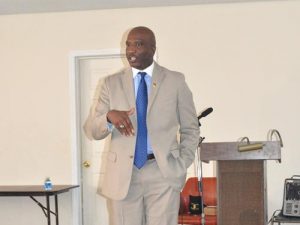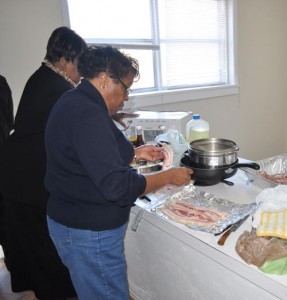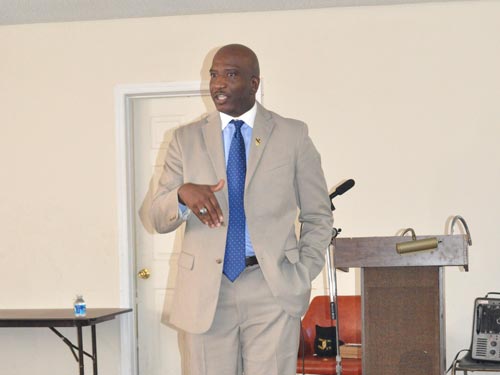
Minister and researcher, Rev. Elvin B. Thompson of Augusta, delivered to a small but very interested audience a study of education in the black community after the Civil War. This was the first in a series of four lectures on Black History held at the Macedonia community building every Saturday morning through February, in Edgefield.
“There was no education for blacks before the Civil War,” according to Thompson, except for a clandestine style of teaching by whites, who asked the “student” to turn his book upside down if anyone saw him reading, in order to look ignorant, so that they would not be breaking the law.
Rev. Thompson pointed out that economics played a big role in this refusal of education – teach your laborer how to read and he will go elsewhere to work. And make more money.
In spite of this huge impediment to education, there were more blacks than whites in schools in the late 1800s. (1869, 11,000 whites and 15,000 blacks) They wanted better, emphasized the speaker.
Thompson noted that what pushed blacks forward was what happened in their churches, where early schooling took place. He also noted that the first black teachers were not necessarily qualified, but in knowing how to read they tried to teach others.
As researcher, Thompson shared that Edgefield County, then Old Edgefield District, was larger, and was a “big footprint” in state government and society. He talked about Teacher Institutes, organizations that gave teachers training for helping others to learn. One of the first such Institutes was at Bettis Academy, the school in our county that was established by Rev. Alexander Bettis in 1881. In 1891, the summer Institute at Bettis, out of 80 teachers total, participating in the Institute were 17 black males and 16 black females.
It was in 1891, according to Thompson, that the State Superintendent of Education sought to formalize teacher training through these Institutes. At that time there were students in the following numbers in schools in S.C.: 2044 white males, 1830 white females; 2501 black males and 2907 black females.
Noticing the number of black males participating prompted questions when the lecturer called for them. Several asked why black males are not keeping up now. There were a number of responses: two believed that Integration had a negative side, by pulling children out of their venue and where their identities were not always addressed fully. The answer to this problem, for some, is more black teachers and mentors.
Thompson also noted that the home has responsibility in these issues also.
Among other responses were: “It’s my lunch” is no longer the main pressure; “good is the enemy of great” which speaks of mediocrity; children are distracted by so
much today.
The lectured was followed by a full course breakfast cooked in the style of the black community: a large platter of fried country ham, scrambled eggs, juicy and crisp bacon, red eye gravy over grits and biscuits with molasses. Next week those attending will have an opportunity to eat vegetables from some fine cooks. The cost is $5.00.


